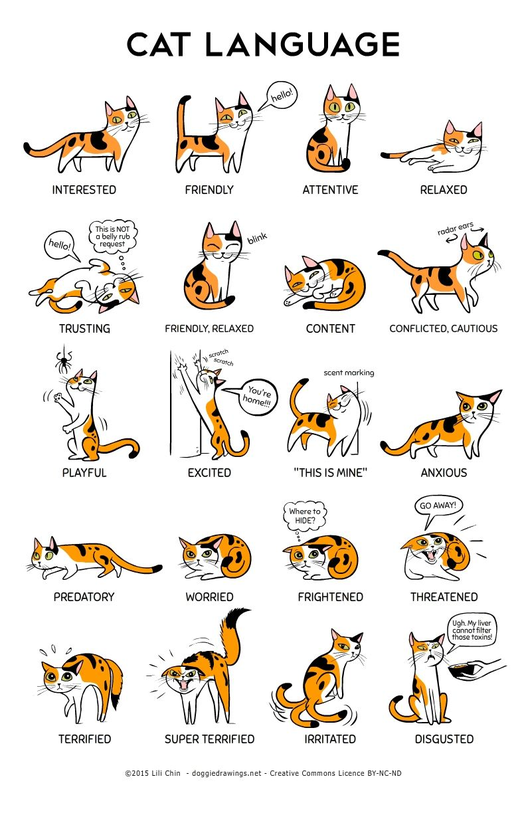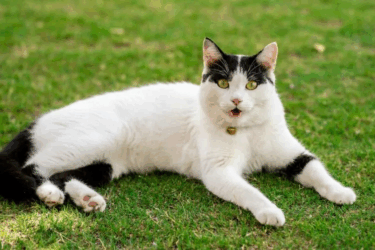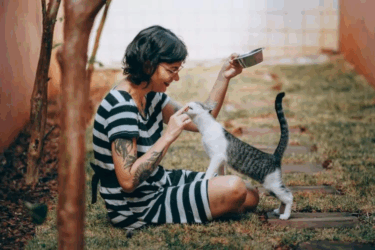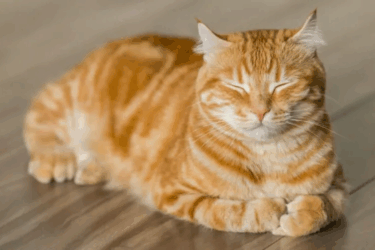
Some cats are quiet, while others will chat your ears off. We, of course, chatter right back because it’s so cozy. But real communication in cats is done with their bodies. They use their tails, ears, and eyes to show exactly how they feel. Once you understand this, you’ll always know what your cat wants to tell you.
How cats communicate
Every cat is different, but they all have one thing in common: they communicate through body language. Because we believe it’s important for you and your cat to become the best of friends, we’ll tell you about the most common forms of cat communication here.
1. I like you and I’m friendly
Cats love their owners and are happy to show it. Does your cat greet you with ears up, eyes half-closed, and tail in the air with a slight curve at the end? That means they like you.
2. I trust you
If your cat lies on their back and shows their belly, it means they feel comfortable around you. Their belly is the most vulnerable part of their body. This isn’t an invitation to pet their belly, as not all cats like that.
3. I’m relaxed
Have you ever seen your cat “wink”? In cat language, this means: “everything is okay and I mean no harm.” Fun fact: if your cat is scared of something, you can do the same to them. Look at them from a distance and occasionally close your eyes. This shows them that it’s safe.
4. I’m excited
Cats scratch things to relax. Always have a scratching post at home to save your furniture. Cats can also scratch things when they are excited and happy. So never punish them for this; instead, give them a nice pet.
5. This is mine!
You’ve probably seen your cat rub their head against a door, bush, or cat toy. Your cat is leaving their scent behind with a gland near their mouth. This tells other cats: stay away, this is mine!
6. I’m tense or anxious
Cats are sensitive creatures – if something changes in the house or they don’t trust something or someone, they can become tense or anxious. You can see this in their posture: their ears go sideways, they lower their hind legs, and their tail hangs low to the ground. In extreme fear, they hunch up, ears sideways, and tail tightly curled around them.
7. I feel threatened
A cat that feels threatened can look terrifying: their eyes are wide, ears flat, and they hiss at you. If your cat behaves this way, they are mainly scared and want to be left alone. It’s best to do just that.
8. I’m irritated
Who doesn’t know it – the flicking cat tail. When two cats have a conflict, this signals the beginning of an attack. But if your cat is lying or sitting calmly and starts flicking their tail, they are showing irritation. Do they do this when you’re petting them? Then it’s best to stop for a while.
Facial expressions of cats
Facial expressions are an important part of cat language. Cats use their eyes, ears, and whiskers to convey their emotions and intentions.
Eyes:
- Half-open eyes: Relaxation and trust.
- Wide pupils: Fear, excitement, or aggression.
- Slow blinking: Reassurance and affection.
Ears:
- Upright: Curiosity and alertness.
- Back and flat: Fear, stress, or aggression.
Whiskers:
- Forward: Curiosity and alertness.
- Backward: Fear or irritation.
Cat Sounds
Cats also communicate through sounds such as meowing, purring, and growling.
- Meowing: Ranges from greetings to requests for attention.
- Purring: A sign of contentment and relaxation.
- Growling: Can indicate irritation or defensive behavior.
Body language and behavior
In addition to facial expressions and sounds, body language and behavior play a large role in cat communication.
- Postures: A relaxed cat often lies stretched out, while a tense cat makes themselves small.
- Tail Positions: An upright tail means friendliness, while a low-hanging or puffed tail indicates tension or fear.
- Ears and Eyes: Forward-pointing ears and half-closed eyes indicate relaxation. Flat ears and wide-open eyes suggest fear or aggression.
With this knowledge, you can better understand and respond to your cat’s various signals and behaviors, strengthening the bond between you and your cat.
Read more about the behaviour behind your cat’s ‘crazy five minutes’

Disclaimer: Petrebels does not consist of veterinarians or behavioral experts: all content, information and tips on this blog are intended to inspire and inform you. Does your cat have complaints or problems and do you have doubts about your cat’s health? Then always go to the vet or a behavioral expert.


